SEO
25 Creative Examples of About Us Pages

The About Us page of your website is an essential source of information for all who want to know more about your business.
About Us pages are where you showcase your history, what is unique about your work, your company’s values, and who you serve.
The design, written content, and visual or video elements together tell an important story about who you are and why you do it.
How can you make the most of this integral part of your marketing strategy?
In this article, you’ll learn what makes an exceptional About Us page.
You’ll find 25 examples of the best ones out there, too, to inspire your own About Us page design and content.
The Components Of A Great About Us Page
There isn’t a winning template to create a great About Us page. However, there are key components to make a convincing pitch with your brand story.
Your Mission
You don’t need to outright say, “our mission is ____,” but you should convey the mission of your business in your About Us copy. This is key for attracting talent, as well as leads that have Corporate Social Responsibility (CSR) goals.
Your Story (History)
Every business has an origin story worth telling, and usually, one that justifies why you even do business and have clients.
Some centennial enterprises have pages of content that can fit in this section, while startups can tell the story of how the company was born, its challenges, and its vision for the future.
Your Services (And Benefits)
Of course, you have a homepage and dedicated pages for your products, but summarizing your offerings on the About Us page is crucial to tie them in with brand values in your messaging.
Highlight the benefits and showcase what you do (and why it is unique).
Your Social Proof
Reviews, client logos, case studies, and results bring consistency to your About Us page. It’s what really proves what you are saying is real and the impact you can bring to future clients.
With these components in mind, you will have a framework from which to build an engaging and unique About Us page.
However, if you are looking for some inspiration, the 25 examples below will guide your creative process.
ToyFight is an award-winning creative design agency.
You’ll find the About Page at the top of the menu under the Who section.
This page has a unique feel, thanks to the deconstructed action figures representing the founders, Leigh Whipday and Jonny Lander.
The great attention to detail and interactivity also reflect the company’s 16 years of experience.
To sum up, this page stands out by providing the perfect mix of fun and information.
 Screenshot from Band, January 2022
Screenshot from Band, January 2022Band is a multidisciplinary creative studio based in the Pacific Northwest.
Their About Us page stands out by showcasing some of their unique and creative projects.
No number of words could hope to tell one of their potential clients nearly as much as these pictures can.
In this case, the 25 pictures featured on Band’s About Us page are worth much more than the 170 actual words you’ll read on the page.
The magical visuals and overall simple look and feel make this About Us page one of our top picks.
 Screenshot from Anton & Irene, January 2022
Screenshot from Anton & Irene, January 2022This might be the most distinctive website we’ve come across.
Anton & Irene is a design agency based in Manhattan.
Why are they a distinctive web presence?
Because their page takes parallax scrolling to the next level.
The snowy effects, bold colors, and quirky visuals create a truly captivating experience.
 Screenshot from Pierro Caron, January 2022
Screenshot from Pierro Caron, January 2022Pierro Caron is a French artisan sculptor.
Want to know our favorite part about his page?
The honesty.
Here is a man with great respect for wood and handcrafted sculptures that “tell a story and testify to the richness of one of our most precious resources.”
His website is light, easy to read, and filled with inspiring quotes and photos of his labors of love.
 Screenshot from Blake Fili Suárez, January 2022
Screenshot from Blake Fili Suárez, January 2022Who doesn’t love a good bio?
Especially one that starts with “I was born in good ol’ Madison, Wisconsin. The son of a Librarian and a Researcher.”
It also goes on to tell you how he and his family survived Hurricane Andrew and how his sister was born that night.
Who is this guy?
Blake Fili Suárez is an illustrator and designer with a fantastic sense of humor.
His quirkiness comes through thanks to his humorous tone and goofy picture.
The page, while minimalist in design, offers a glimpse into Suárez’s colorful personality and his impressive block of work.
 Screenshot from LessFIlms, January 2022
Screenshot from LessFIlms, January 2022If you were a “super awesome” video business, what medium would you choose to show people what you do?
Video, of course.
LessFilms is a video production company based in Florida with clients and team members all over the world.
On their about page, you’ll find a humorous 50-second video along with a short list of facts summarizing their love for tacos, travel, and karate – a theme that certainly permeates most of the content on the website.
 Screenshot from DoomTree, January 2022
Screenshot from DoomTree, January 2022DoomTree’s page starts off as a coming-of-age story about how “a mess of friends” built the record label that made them a household name in Minneapolis.
However, it’s really the audio and the visuals that got us hooked.
Why tell, when you can show, right?
Explore their About Us page to meet the crew, listen to their songs, and get the latest news.
 Screenshot from Cupcakes and Cashmere, January 2022
Screenshot from Cupcakes and Cashmere, January 2022On this website’s main page you will find everything lifestyle-related – fashion, food, beauty, home decor, and more.
But it’s the About section that introduces you to the team that makes this website an endless source of inspiration.
The page introduces founder Emily Schuman, as well as her blog, books, and fashion collection.
Want to stay in touch?
No problem – the page also features useful links to her social media pages, as well as her online shop.
 Screenshot from NOWNESS, January 2022
Screenshot from NOWNESS, January 2022NOWNESS is a video channel providing the best in global arts and culture.
Therefore, it’s only natural that their About Us page features a compilation of various videos they host.
The content’s diversity and the team’s curatorial expertise are another reason to keep you browsing.
To stay in line with their video-centric aesthetic, the text on their page is short and concise.
However, it still provides enough guidance for browsing the website and even contributing.
Access the awards section and see why NOWNESS is currently a powerhouse in online film and video.
 Screenshot from Mailchimp, January 2022
Screenshot from Mailchimp, January 2022Millions of people use Mailchimp every day to create, send, and track email newsletters.
That’s the clever part behind Mailchimp’s About Page.
It’s a great example of how to use such a page as a sort of pre-sales platform.
It’s simple, fun and effective, quite colorful, and displays a welcoming mix of diverseness.
 Screenshot from Tate, January 2022
Screenshot from Tate, January 2022Tate’s About Us states that their mission is to “increase the public’s enjoyment of British art […] and international modern and contemporary art.”
So said, so done.
How come?
Because this page eases the journey for any reader seeking to take them up on their mission.
Scroll down to find out who they are, how to stay in touch, and everything in between.
 Screenshot from Yellow Leaf Hammocks, January 2022
Screenshot from Yellow Leaf Hammocks, January 2022Yellow Leaf Hammocks is trying to save the world one hammock at a time.
Their goal is to break the cycle of extreme poverty by empowering local artisans in Thailand to earn a stable income.
The brand’s About Page is filled with uplifting stories of impeccable craftsmanship and tight-knit communities.
As a result, it’s just as inspiring as their devotion to sustainable change.
 Screenshot from Eight Hour Day, January 2022
Screenshot from Eight Hour Day, January 2022You had me at “Well hello there.”
Well, that’s exactly how the About Us section of Eight Hour Day starts – a welcoming greeting.
For that reason, it also made us browse for more.
Why?
Because as much as you love good design and inspiring illustrations, you also want to meet the people that curate all the content for you.
Furthermore, it’s equally rewarding when you realize that they are just as eager to start a visual dialogue with you.
Nathan Strandberg and Katie Kirk are doing what makes them happy, and this is obvious throughout their page.
 Screenshot from Lonely Planet, January 2022
Screenshot from Lonely Planet, January 2022You know you’re about to hop on a journey when a website’s About Us page tells you to “Just go.”
This is a website for travelers, so the layout is perfect for those eager to explore.
As you scroll down, you discover what Lonely Planet stands for, and their visual aid offers a preview of their services.
The perks?
You see everything in one go and decide for yourself what you take on your journey.
Will it be their apps, their printed guides, or their website?
In any case, every resource becomes an inexhaustible well of travel inspiration.
So, are you ready to go?
 Screenshot from Gummisig, January 2022
Screenshot from Gummisig, January 2022Gummisig is a freelance web designer who likes to talk about himself in the third person.
He also makes great use of oversized text to bring attention to his work in a humorous manner.
Perhaps what’s striking about this page is that it introduces Gummisig’s portfolio, but also reflects his free spirit and commitment.
And while he mentions the household names he worked for in the past, he remains approachable and open to new collaborations.
Scroll down to discover his preferred action items.
Hint: He wants to know your secrets!
Perhaps the most striking feature behind this page is that it acts as a preface to the designer’s portfolio, mirroring his free spirit and a remarkable passion for design.
While he proudly states the companies he has worked for (IKEA is just one of the bigger names to pop up), he does so in a manner that is not boastful.
 Screenshot from Amnesty International, January 2022
Screenshot from Amnesty International, January 2022Amnesty International is more than an NGO.
It is a global movement of more than 7 million people that are campaigning for a better world, where human rights are central.
It is no wonder that the pronoun we is prevalent throughout their page.
Filled with quotes, videos, and testimonials, their page makes you believe that you can hope for a better world. And they have the facts to prove it, too.
If you scroll down, you can access all their accomplishments on the road toward better social change.
After you understand their global footprint, you should also imagine – imagine the possibility of a world where human rights are at the center of discussion.
Good enough reason to stay in touch, no?
 Screenshot from Chattanooga Renaissance Fund, January 2022
Screenshot from Chattanooga Renaissance Fund, January 2022The top part of the Chattanooga Renaissance Fund page aims to attract entrepreneurs into the Chattanooga area of Tennessee.
How?
By describing its history and the companies that already invested there, such as Amazon or Volkswagen, to name a few.
Which begs the question: What prompted these companies to move there?
Find out by reading more about the fund’s members and how they contributed to its growth.
This is especially reassuring because they are also here to help you.
Whether you’re a startup, investor, or third party, the page has a dedicated section for all its users.
All you have to do is prove that you want to turn ideas into existence.
 Screenshot from DORÉ, January 2022
Screenshot from DORÉ, January 2022This website started off as a photography blog founded by Garance Doré.
Eventually, it became a place for inspiration with a growing team that’s eager to question everything.
Whether it is style, femininity, or modern dilemmas, no topic remains off limits.
Ready to contribute to the discussion? By all means, you are most welcome.
The team reads all your comments and is ready to turn your thoughts into their command.
Not sure where to start?
Scroll down to see their work in videos and use the pictures at the bottom to access their Instagram page.
 Screenshot from Bulldog Skincare, January 2022
Screenshot from Bulldog Skincare, January 2022How can you convince men to delve into skincare?
You bring their best friend on their side – a dog.
Meet Bulldog Skincare, the company that aims to make skincare options dedicated to men readily available.
To have you sold, their About Us page greets you with the adorable mug of a bulldog.
This quickly becomes your guide to finding the products that will help you look and feel your best.
As you scroll down, you are growing familiar with the products and are slowly but surely befriending the brand itself and its values.
Their skincare is made from a mix of natural and carefully-selected man-made ingredients.
It’s also vegan and certified by Cruelty Free International.
Their page is so good, it’s no wonder they have a ‘Shop Now’ button every step of the way.
Don’t mind if I do.
 Screenshot from Couro Azul, January 2022
Screenshot from Couro Azul, January 2022Navigating through Couro Azul’s About Us page is like a journey through the unknown.
The kind of journey that keeps you scrolling down for more.
The company makes leather upholstery for cars and trains, and its history and trajectory are equally fascinating.
In addition to the visual delight, the page is also interactive and engaging.
Why?
So that you can understand what the company values from a first browse: 100% in-house products.
Their certificate for ecologic distinction attests to their commitment to environmental best practices.
 Screenshot from Girlboss, January 2022
Screenshot from Girlboss, January 2022The entire Girlboss website is simply inspiring.
The brand aims to redefine success for millennial women – by providing the tools and connections they need to own their futures.
Girlboss empowers them by providing the tools and connections they need to own their futures.
Furthermore, every bit of content you’ll find on this site oozes with passion, humor, and resourcefulness.
These key traits are sewn into the fabric of Girlboss’ global success.
 Screenshot from Purple, Rock, Scissors, January 2022
Screenshot from Purple, Rock, Scissors, January 2022If you want people to understand your company’s values, then put them in bold black and white print – just like Purple, Rock, Scissors did.
Their entire website is a technological marvel.
With its quaint background animation, concise content, and creative visuals, this page is definitely an eye-catcher.
There’s also an openness about it that will unfailingly draw you in.
 Screenshot from Mixd, January 2022
Screenshot from Mixd, January 2022It’s not often that you see an About page that puts so much emphasis on its “meet the team” section.
Each member is portrayed with a short description and an almost full-body shot, complete with their social media accounts.
Boasting big, bold elements and sharp colors, this page excels at making a great first impression.
 Screenshot from 6tematik, January 2022
Screenshot from 6tematik, January 2022There are many things we love about this website, but for brevity’s sake, we’ll narrow it down to two.
First, their main page is highly interactive.
The simple act of pushing a key or moving the mouse reveals a key piece of info about the brand. Because of that, it feels like watching a modern silent movie.
The second thing is the way 6tematik introduces us to its team.
Each member is portrayed by a minimalist caricature that is defined by one obvious trait. Some have long pink hair, others a bushy beard or big glasses.
These traits add a touch of personality to each member’s portrait, without giving too much away.
 Screenshot from Big Cartel, January 2022
Screenshot from Big Cartel, January 2022Made by artists for artists, Big Cartel is an online platform that makes it easy to build and manage an online store.
The simple yet impactful mission statement and the candid employee photographs make this About page refreshingly different.
Each photo in the gallery is unique and personal.
As a result, you won’t find any staged or boring ID-badge-type photos – just a wonderful display of diversity.
Final Takeaways
After analyzing in detail the 25 examples of About Us pages in this article, these are the final takeaways to keep in mind when crafting yours:
Creativity makes your page stand out.
For many companies, the About Us page is just a formality to fill in the sitemap rather than convey a unique marketing message.
However, some brands go beyond, designing eye-catching imagery and writing humorous copy to stand out from the competition. You need to find your unique angle for your About Us page to actually be read.
Feature the people behind the brand.
Whether you are a solopreneur, a dynamic duo agency, or a full-blown global enterprise with hundreds of team members, letting people shine makes an engaging About Us page.
Some of the examples in this article (such as Big Cartel), feature headshots packed with personality, which convey brand values better than any words.
Tie in social proof with your social responsibility.
Showcase results, but also convey the difference your organization is bringing to the world.
Yellow Leaf Hammocks and Mailchimp are two examples from this article that feature on their About Us page how their products are changing their communities for the better.
More resources:
Featured Image: Naumova Marina/Shutterstock
SEO
Google Cautions On Blocking GoogleOther Bot

Google’s Gary Illyes answered a question about the non-search features that the GoogleOther crawler supports, then added a caution about the consequences of blocking GoogleOther.
What Is GoogleOther?
GoogleOther is a generic crawler created by Google for the various purposes that fall outside of those of bots that specialize for Search, Ads, Video, Images, News, Desktop and Mobile. It can be used by internal teams at Google for research and development in relation to various products.
The official description of GoogleOther is:
“GoogleOther is the generic crawler that may be used by various product teams for fetching publicly accessible content from sites. For example, it may be used for one-off crawls for internal research and development.”
Something that may be surprising is that there are actually three kinds of GoogleOther crawlers.
Three Kinds Of GoogleOther Crawlers
- GoogleOther
Generic crawler for public URLs - GoogleOther-Image
Optimized to crawl public image URLs - GoogleOther-Video
Optimized to crawl public video URLs
All three GoogleOther crawlers can be used for research and development purposes. That’s just one purpose that Google publicly acknowledges that all three versions of GoogleOther could be used for.
What Non-Search Features Does GoogleOther Support?
Google doesn’t say what specific non-search features GoogleOther supports, probably because it doesn’t really “support” a specific feature. It exists for research and development crawling which could be in support of a new product or an improvement in a current product, it’s a highly open and generic purpose.
This is the question asked that Gary narrated:
“What non-search features does GoogleOther crawling support?”
Gary Illyes answered:
“This is a very topical question, and I think it is a very good question. Besides what’s in the public I don’t have more to share.
GoogleOther is the generic crawler that may be used by various product teams for fetching publicly accessible content from sites. For example, it may be used for one-off crawls for internal research and development.
Historically Googlebot was used for this, but that kind of makes things murky and less transparent, so we launched GoogleOther so you have better controls over what your site is crawled for.
That said GoogleOther is not tied to a single product, so opting out of GoogleOther crawling might affect a wide range of things across the Google universe; alas, not Search, search is only Googlebot.”
It Might Affect A Wide Range Of Things
Gary is clear that blocking GoogleOther wouldn’t have an affect on Google Search because Googlebot is the crawler used for indexing content. So if blocking any of the three versions of GoogleOther is something a site owner wants to do, then it should be okay to do that without a negative effect on search rankings.
But Gary also cautioned about the outcome that blocking GoogleOther, saying that it would have an effect on other products and services across Google. He didn’t state which other products it could affect nor did he elaborate on the pros or cons of blocking GoogleOther.
Pros And Cons Of Blocking GoogleOther
Whether or not to block GoogleOther doesn’t necessarily have a straightforward answer. There are several considerations to whether doing that makes sense.
Pros
Inclusion in research for a future Google product that’s related to search (maps, shopping, images, a new feature in search) could be useful. It might be helpful to have a site included in that kind of research because it might be used for testing something good for a site and be one of the few sites chosen to test a feature that could increase earnings for a site.
Another consideration is that blocking GoogleOther to save on server resources is not necessarily a valid reason because GoogleOther doesn’t seem to crawl so often that it makes a noticeable impact.
If blocking Google from using site content for AI is a concern then blocking GoogleOther will have no impact on that at all. GoogleOther has nothing to do with crawling for Google Gemini apps or Vertex AI, including any future products that will be used for training associated language models. The bot for that specific use case is Google-Extended.
Cons
On the other hand it might not be helpful to allow GoogleOther if it’s being used to test something related to fighting spam and there’s something the site has to hide.
It’s possible that a site owner might not want to participate if GoogleOther comes crawling for market research or for training machine learning models (for internal purposes) that are unrelated to public-facing products like Gemini and Vertex.
Allowing GoogleOther to crawl a site for unknown purposes is like giving Google a blank check to use your site data in any way they see fit outside of training public-facing LLMs or purposes related to named bots like GoogleBot.
Takeaway
Should you block GoogleOther? It’s a coin toss. There are possible potential benefits but in general there isn’t enough information to make an informed decision.
Listen to the Google SEO Office Hours podcast at the 1:30 minute mark:
Featured Image by Shutterstock/Cast Of Thousands
SEO
AI Search Boosts User Satisfaction

A new study finds that despite concerns about AI in online services, users are more satisfied with search engines and social media platforms than before.
The American Customer Satisfaction Index (ACSI) conducted its annual survey of search and social media users, finding that satisfaction has either held steady or improved.
This comes at a time when major tech companies are heavily investing in AI to enhance their services.
Search Engine Satisfaction Holds Strong
Google, Bing, and other search engines have rapidly integrated AI features into their platforms over the past year. While critics have raised concerns about potential negative impacts, the ACSI study suggests users are responding positively.
Google maintains its position as the most satisfying search engine with an ACSI score of 81, up 1% from last year. Users particularly appreciate its AI-powered features.
Interestingly, Bing and Yahoo! have seen notable improvements in user satisfaction, notching 3% gains to reach scores of 77 and 76, respectively. These are their highest ACSI scores in over a decade, likely due to their AI enhancements launched in 2023.
The study hints at the potential of new AI-enabled search functionality to drive further improvements in the customer experience. Bing has seen its market share improve by small but notable margins, rising from 6.35% in the first quarter of 2023 to 7.87% in Q1 2024.
Customer Experience Improvements
The ACSI study shows improvements across nearly all benchmarks of the customer experience for search engines. Notable areas of improvement include:
- Ease of navigation
- Ease of using the site on different devices
- Loading speed performance and reliability
- Variety of services and information
- Freshness of content
These improvements suggest that AI enhancements positively impact various aspects of the search experience.
Social Media Sees Modest Gains
For the third year in a row, user satisfaction with social media platforms is on the rise, increasing 1% to an ACSI score of 74.
TikTok has emerged as the new industry leader among major sites, edging past YouTube with a score of 78. This underscores the platform’s effective use of AI-driven content recommendations.
Meta’s Facebook and Instagram have also seen significant improvements in user satisfaction, showing 3-point gains. While Facebook remains near the bottom of the industry at 69, Instagram’s score of 76 puts it within striking distance of the leaders.
Challenges Remain
Despite improvements, the study highlights ongoing privacy and advertising challenges for search engines and social media platforms. Privacy ratings for search engines remain relatively low but steady at 79, while social media platforms score even lower at 73.
Advertising experiences emerge as a key differentiator between higher- and lower-satisfaction brands, particularly in social media. New ACSI benchmarks reveal user concerns about advertising content’s trustworthiness and personal relevance.
Why This Matters For SEO Professionals
This study provides an independent perspective on how users are responding to the AI push in online services. For SEO professionals, these findings suggest that:
- AI-enhanced search features resonate with users, potentially changing search behavior and expectations.
- The improving satisfaction with alternative search engines like Bing may lead to a more diverse search landscape.
- The continued importance of factors like content freshness and site performance in user satisfaction aligns with long-standing SEO best practices.
As AI becomes more integrated into our online experiences, SEO strategies may need to adapt to changing user preferences.
Featured Image: kate3155/Shutterstock
SEO
Google To Upgrade All Retailers To New Merchant Center By September
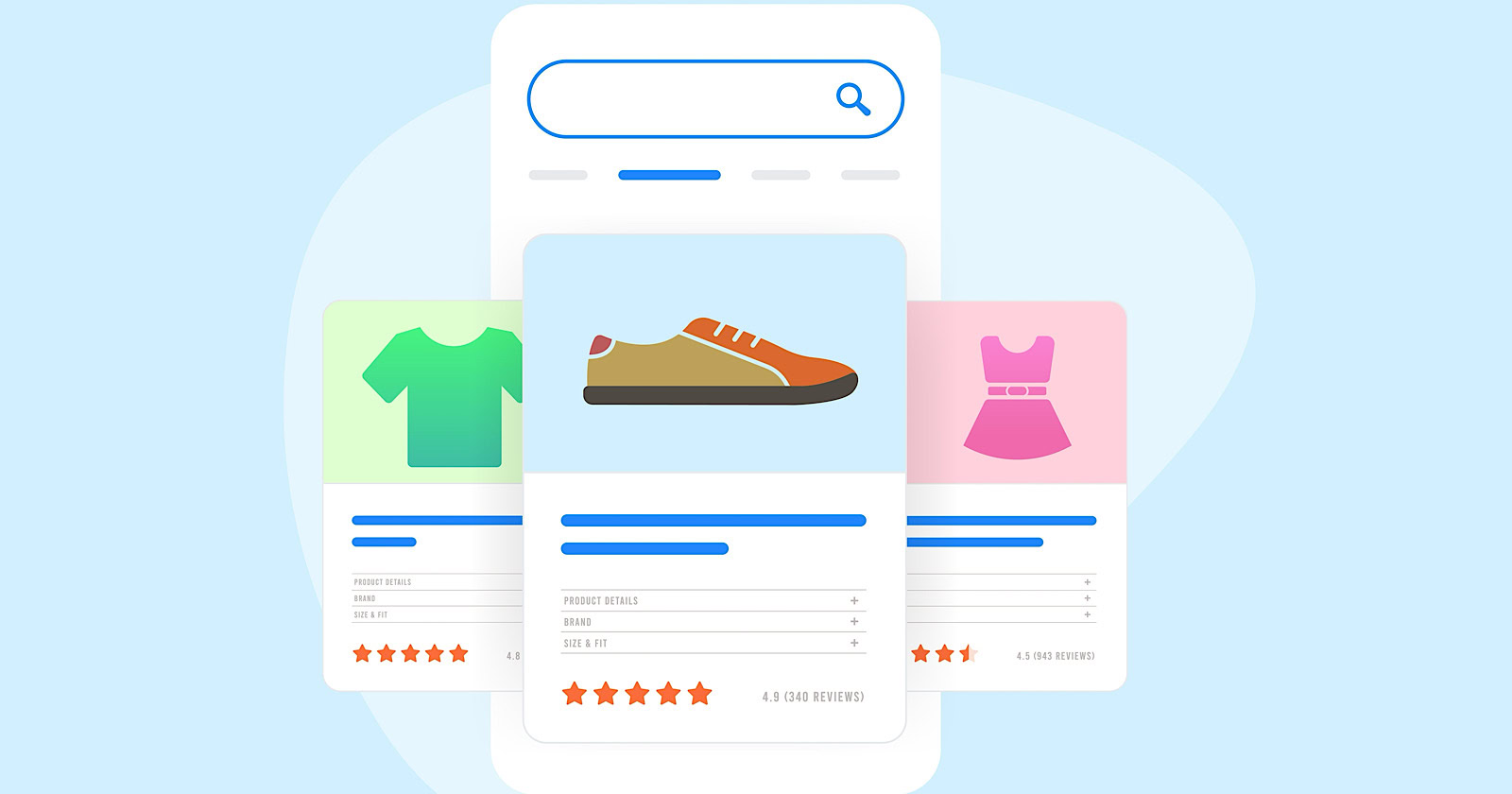
Google has announced plans to transition all retailers to its updated Merchant Center platform by September.
This move will affect e-commerce businesses globally and comes ahead of the holiday shopping season.
The Merchant Center is a tool for online retailers to manage how their products appear across Google’s shopping services.
Key Changes & Features
The new Merchant Center includes several significant updates.
Product Studio
An AI-powered tool for content creation. Google reports that 80% of current users view it as improving efficiency.
This feature allows retailers to generate tailored product assets, animate still images, and modify existing product images to match brand aesthetics.
It also simplifies tasks like background removal and image resolution enhancement.
Centralized Analytics
A new tab consolidating various business insights, including pricing data and competitive analysis tools.
Retailers can access pricing recommendations, competitive visibility reports, and retail-specific search trends, enabling them to make data-driven decisions and capitalize on popular product categories.
Redesigned Navigation
Google claims the new interface is more intuitive and cites increased setup success rates for new merchants.
The platform now offers simplified website verification processes and can pre-populate product information during setup.
Initial User Response
According to Google, early adopters have shown increased engagement with the platform.
The company reports a 25% increase in omnichannel merchants adding product offers in the new system. However, these figures have yet to be independently verified.
Jeff Harrell, Google’s Senior Director of Merchant Shopping, states in an announcement:
“We’ve seen a significant increase in retention and engagement among existing online merchants who have moved to the new Merchant Center.”
Potential Challenges and Support
While Google emphasizes the upgrade’s benefits, some retailers, particularly those comfortable with the current version, may face challenges adapting to the new system.
The upgrade’s mandatory nature could raise concerns among users who prefer the existing interface or have integrated workflows based on the current system.
To address these concerns, Google has stated that it will provide resources and support to help with the transition. This includes tutorial videos, detailed documentation, and access to customer support teams for troubleshooting.
Industry Context
This update comes as e-commerce platforms evolve, with major players like Amazon and Shopify enhancing their seller tools. Google’s move is part of broader efforts to maintain competitiveness in the e-commerce services sector.
The upgrade could impact consumers by improving product listings and providing more accurate information across Google’s shopping services.
For the e-commerce industry as a whole, it signals a continued push towards AI-driven tools and data-centric decision-making.
Transition Timeline
Google states that retailers will be automatically upgraded by September if they still need to transition.
The company advises users to familiarize themselves with the new features before the busy holiday shopping period.
Featured Image: BestForBest/Shutterstock
-

 SEARCHENGINES6 days ago
SEARCHENGINES6 days agoBillions Of Google goo.gl URLs To 404 In The Future
-
SEARCHENGINES5 days ago
Daily Search Forum Recap: July 22, 2024
-

 SEARCHENGINES7 days ago
SEARCHENGINES7 days agoGoogle Core Update Coming, Ranking Volatility, Bye Search Notes, AI Overviews, Ads & More
-

 SEO6 days ago
SEO6 days ago11 Copyscape Alternatives To Check Plagiarism
-

 SEO6 days ago
SEO6 days agoGoogle Warns Of Last Chance To Export Notes Search Data
-
SEARCHENGINES4 days ago
Daily Search Forum Recap: July 23, 2024
-

 AFFILIATE MARKETING6 days ago
AFFILIATE MARKETING6 days agoThe Top 5 AI Tools That Can Revolutionize Your Workflow and Boost Productivity
-

 SEO4 days ago
SEO4 days agoSystem Builders – How AI Changes The Work Of SEO


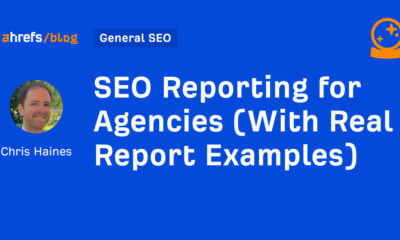

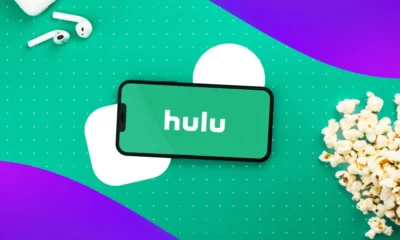



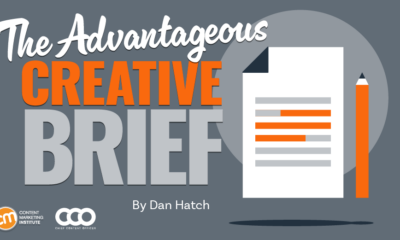



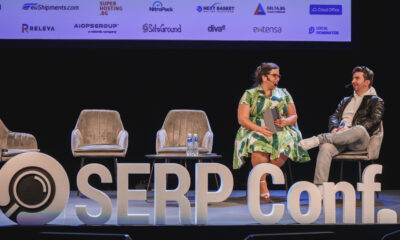



You must be logged in to post a comment Login